|
|
Post by cobber on May 10, 2009 19:47:20 GMT 10
I hope you are able to find something about the “Reo” 'van Reddo.... I can't  Everybody would be aware that this is a pretty sick design.. right   If you examine the ropes and pulleys at the front of the 'van you can see that as the sides are pulled down the top rises.... the gaps created would be filled by canvas. There are two legs cliped on each side to support the sides in the horizontal position. A pretty smart simple system worthy of Patent protection you would think... but a search of the various data bases don't come up with this design.... there are others such as the “Rice” folding caravan patented in 1925, and it stayed in production until 1938... and the one patented by P. G. Williams in 1935 that never saw the light of day so far as I can find so..... where did this great “Reo” design come from and...go to. This is the “Rice” System that apparently worked well 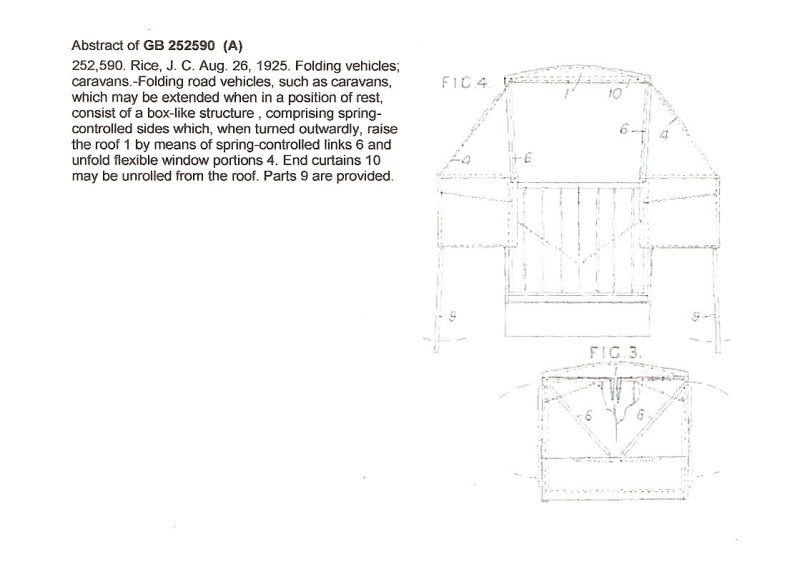 And this is the Williams system that looks like a mad mans nightmare compared to the “Reo” way of doing things. 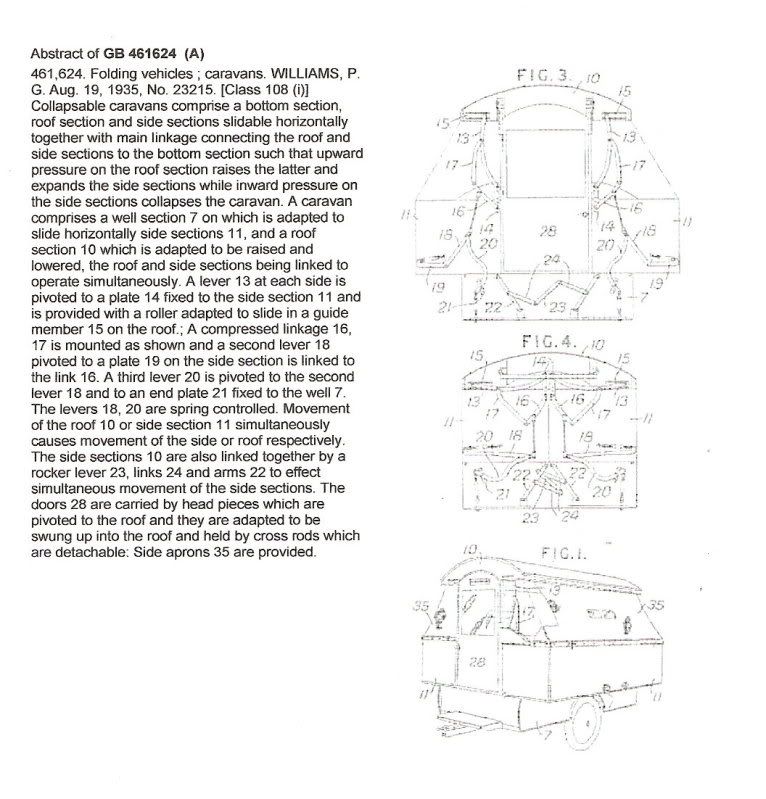 Stay tuned. Cobber. |
|
|
|
Post by jg66rob on May 26, 2009 17:05:02 GMT 10
Here we have an image that was taken in 1938. It was taken at a place called Eastern Beach near Auckland and it is a week end outing of the Auckland Caravan Club. 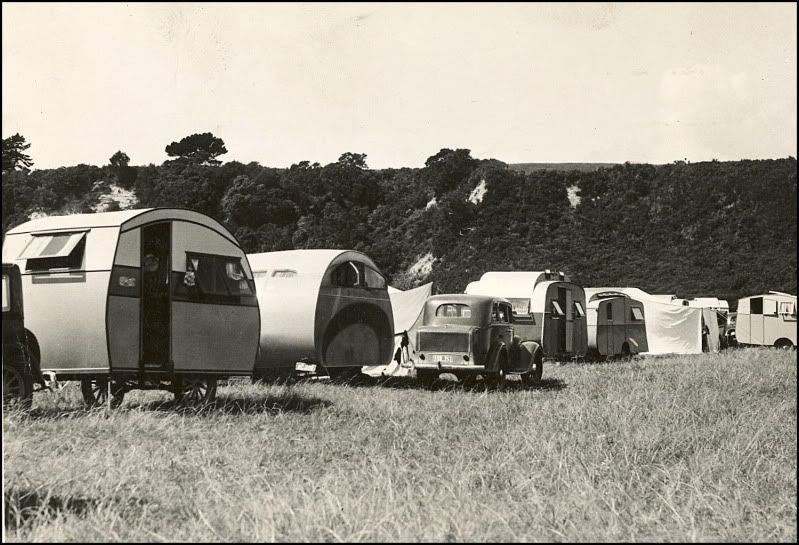 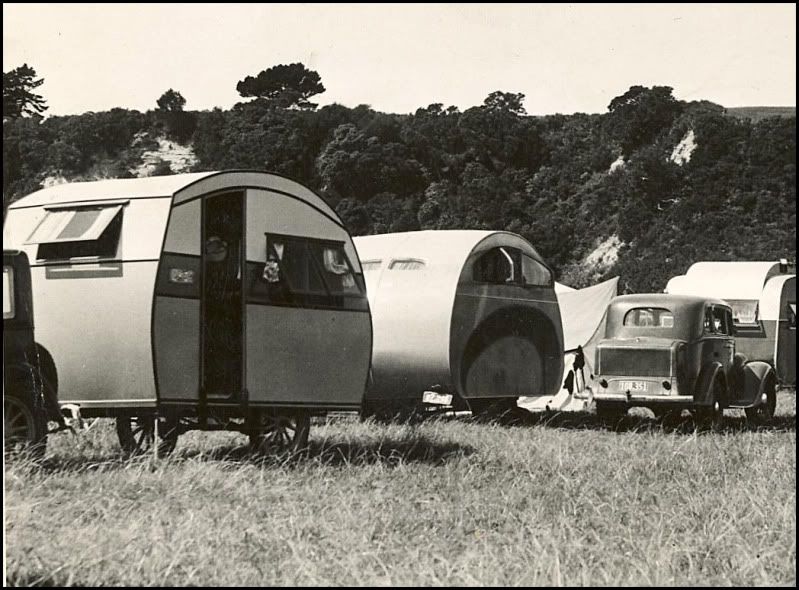 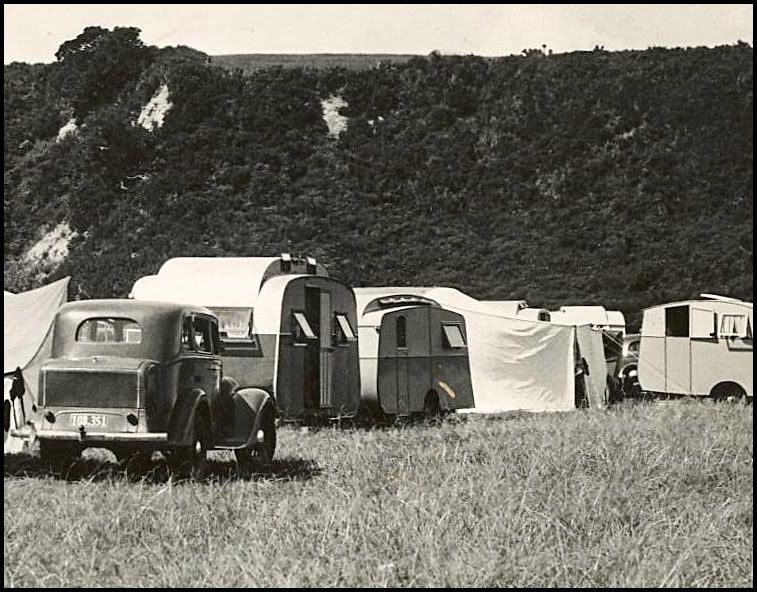 The van of most interest is the one on the far left with its 1920,s wooden spoke wheels and the tow car also from the 20's. |
|
|
|
Post by cobber on May 26, 2009 18:59:54 GMT 10
jg66rob, That is a great photo, and thanks for giving us the close ups  Where did you find it  Not even Chris Hunter (who wrote the book "Vantastic -A pictorial History of Caravans in New Zealand" had that one. Cobber. |
|
|
|
Post by jg66rob on May 26, 2009 21:49:02 GMT 10
Hi Cobber, I,ve sent you a pm
|
|
John
Full Member
  
Posts: 267
|
Post by John on Jul 3, 2009 0:18:52 GMT 10
|
|
|
|
Post by cobber on Sept 1, 2009 8:50:06 GMT 10
This advertisement was in the "Australian Home Beautiful" June 1st 1933. 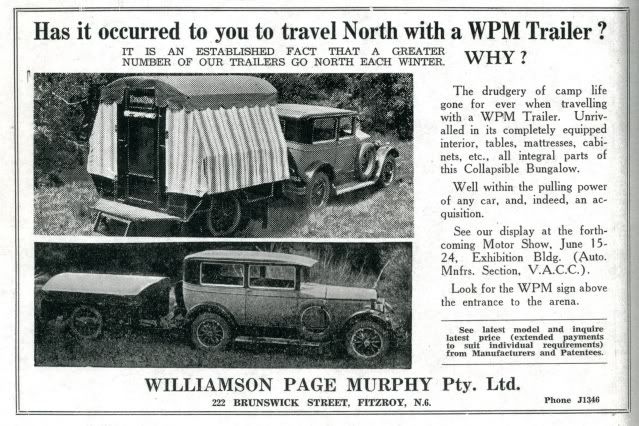 Cobber. |
|
|
|
Post by cobber on Sept 6, 2009 16:29:36 GMT 10
I think it is safe to say this caravan is a 30's model even though we don't know when the photo was taken ...the clue is the "J model" Vauxhall is probably a pre war 1939 model (so I have been told  )  Cobber. |
|
|
|
Post by cobber on Mar 5, 2010 15:40:57 GMT 10
These photos are enlargements taken from a panorama of the first RACV rally at Barwon Heads in October 1937. How many caravans can you identify ? 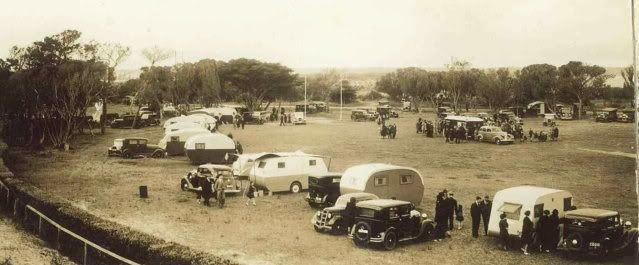 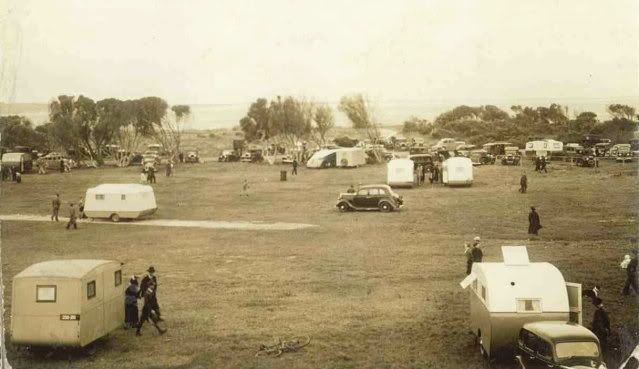 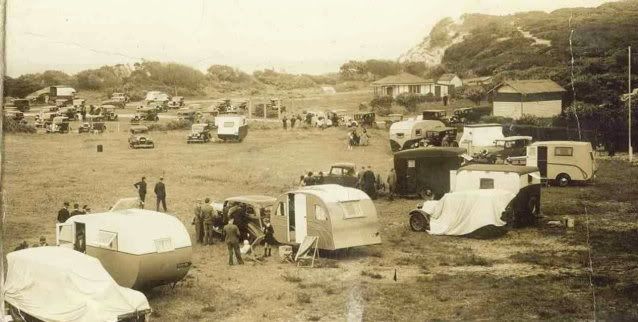 Cobber. |
|
|
|
Post by ronmcgr on Mar 5, 2010 17:22:22 GMT 10
Cobber, I can see what looks like a Don or two in there, but what does surprise me is their dress!  Some holiday, dolled up in suits, hats, Ladies in long frocks.... Maybe we should all get dressed to the "nines" at a VV meeting ;D Then again.......maybe not in QLD, it is TOO hot    Cheers, Ron |
|
|
|
Post by Don Ricardo on Mar 5, 2010 18:52:18 GMT 10
OK Cobber, I'm up for the challenge!    Here's what I reckon: 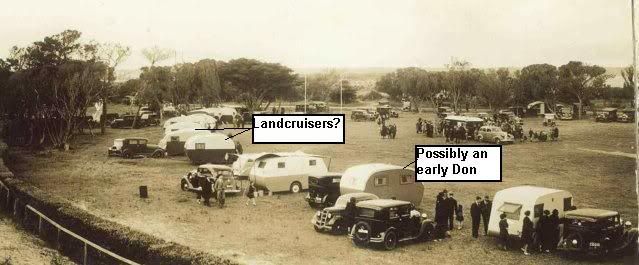 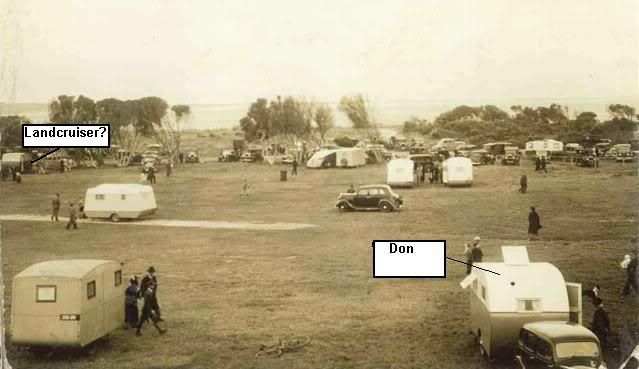 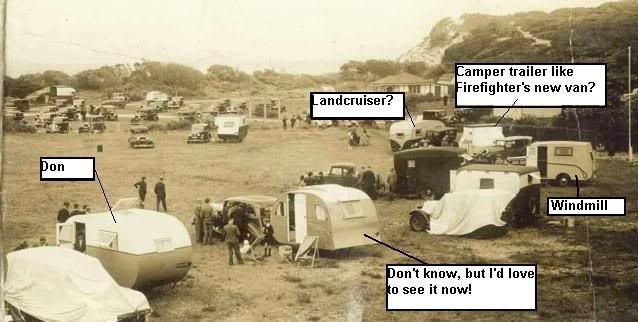 What do you think? There's a couple there that are just fascinating - the one with the fan shaped windows to the right of the Don in the third photo, for starters. Wonder if that's still hidden away in a shed somewhere like the Humpties new van? Ron - interesting comment about the style of dress. It reflects the fact that people used to dress more formally in those days, even on holidays. A different world indeed! Don Ricardo |
|
|
|
Post by Don Ricardo on Mar 6, 2010 13:48:01 GMT 10
|
|
|
|
Post by cobber on Mar 6, 2010 19:25:20 GMT 10
Going back to the RACV rally photos....... in the first photo the 'van in the center of the field with the crowd around it is possible a "Nomad Covered Wagon" which were imported into the UK from America in 1937..... and maybe brought into Australia to test the market. You can see a bit about it in DHL here.Cobber. |
|
|
|
Post by Don Ricardo on Mar 6, 2010 20:57:44 GMT 10
Hi Cobber,
I can see what you mean. The van does look like it's a Covered Wagon style vehicle, and we know that there was at least one of that style in Australia around about that time... Bobt has shown me a couple of pics from the RACV Caravan Club outings which include what I think are two vans of similar styling. It stands to reason that one of them is the van we are looking at.
Speaking of the photos you posted, if you look at the second photo and look at the two caravans parked parallel in front of, but some distance from the Don, they look to be identical. I wonder if they are Windmills? What do you think? Bit hard to tell really, and I may be clutching at straws...
Don Ricardo
|
|
|
|
Post by cobber on Mar 7, 2010 6:15:30 GMT 10
G'day Don R, Those two you mention would be the same as the one parked on the cricket pitch...(I think) I don't know what they are but...... they don't have the "Windmill" side stripe. In the third photo the little 'van this side of what you described as similar to F/F's 'van has the very distinctive side strip displayed on this photo of a "Windmill" caravan, OK the shape of the 'van is different but  by 1937 chances are "Windmill" probably had a few shapes and models we aren't aware of....yet. Cobber confused |
|
|
|
Post by Don Ricardo on Mar 7, 2010 15:02:42 GMT 10
In the third photo the little 'van this side of what you described as similar to F/F's 'van has the very distinctive side strip displayed on this photo of a "Windmill" caravan By george sir, how observant of you!    The Windmill decoration is certainly very distinctive and I haven't seen pics of any other van with anything remotely like it, so I think you are very probably right. I have added a 'Windmill' label to my copy of the photo accordingly.    Not sure about the van on the cricket pitch being the same as the 'twins' to the right, but it really is pretty impossible to tell given the size of the photos we are looking at. Don Ricardo |
|
|
|
Post by Swellwillys on Mar 8, 2010 10:09:59 GMT 10
That 36 Car Cruiser is one of the most beautiful vans I've ever seen .
Simply amazing !
Thanks for sharing it Do Ricardo!
Swellwillys
|
|
|
|
Post by Don Ricardo on Mar 27, 2010 15:01:56 GMT 10
Afternoon everybody, Following are some further photos from various RACV Caravan Club rallies, and possibly other caravanning get togethers, in the late 1930's very kindly provided by Bobt. First up a pic which includes what I think is another view of the van (second from left) that Cobber was comparing to a US or UK Nomad in Reply #36 above:  Next is a pic of the van with the fan shaped windows to be seen in the third photo in Reply #34. This photo shows that the van has the loop shaped side stripe which seems to have been a unique feature of Windmill caravans. Another look at the photo in Reply #34 shows that the loop can also be seen on the same van there as well, although it is very faint. Note also the RACV patrol visible in the top right hand corner of this photo - an Austin 7, I think: 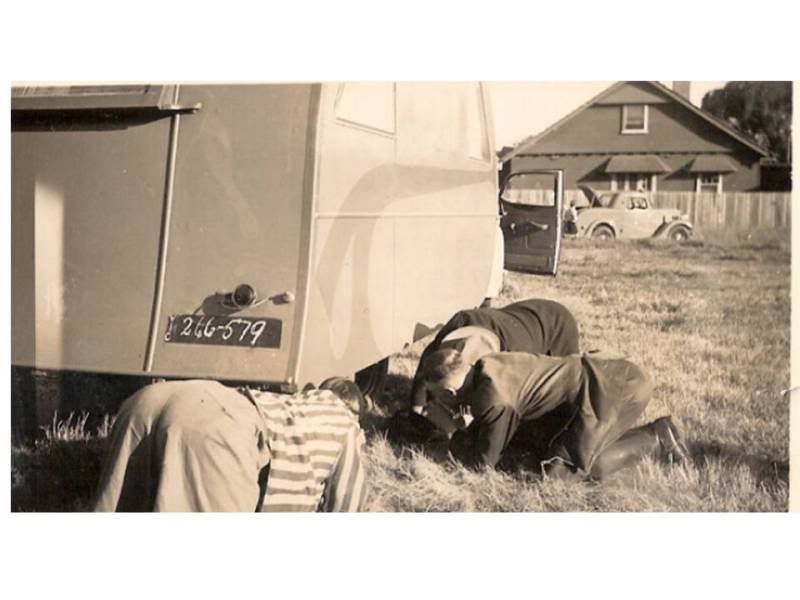  What I think is a Land Cruiser 'Regent' (front), and what is definitely a Furness (rear) [See postscript below regarding this Furness caravan]:  Another couple of shots of Furnesses - the one without the signwritten name to the left of the door may very well be the same van as in the photo above. 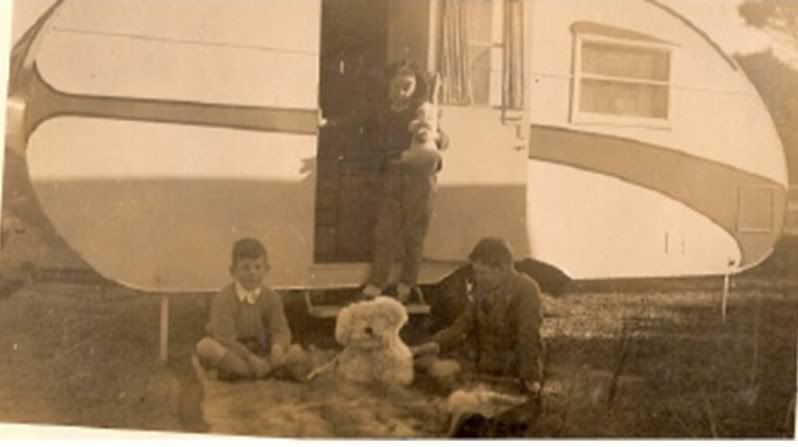 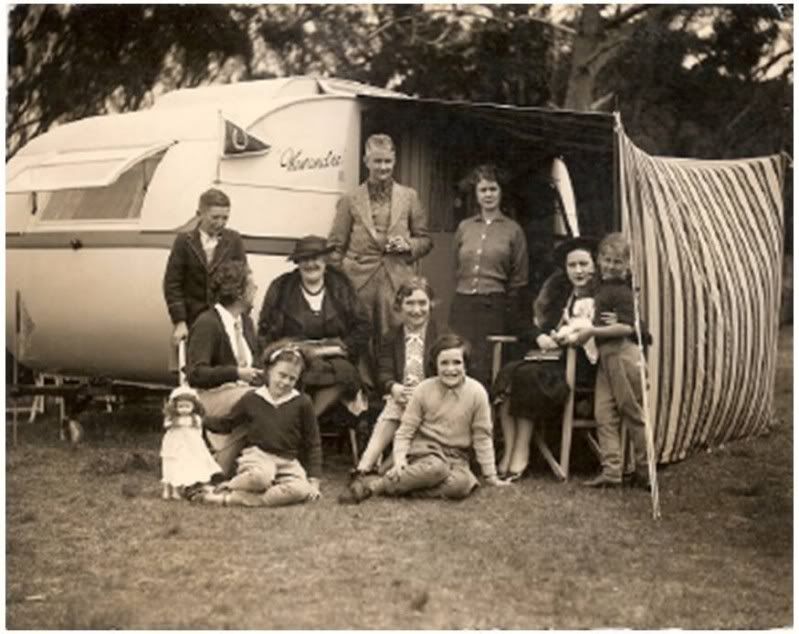 Oddly enough - given that there were a number of caravan manufacturers in Victoria at the time, including Land Cruiser which judging from these pics seems to have been pretty popular - a Furness van was often used for publicity shots for Melbourne motor shows or to illustrate caravan stories in the newspapers. I'm wondering whether somebody pretty prominent in the Melbourne motoring scene, eg a big wheel in the RACV Caravan Club, had a Furness? Just a theory... Next up the rear view of a Land Cruiser 'Royal' if I am not mistaken, plus a bunch of happy caravanners: 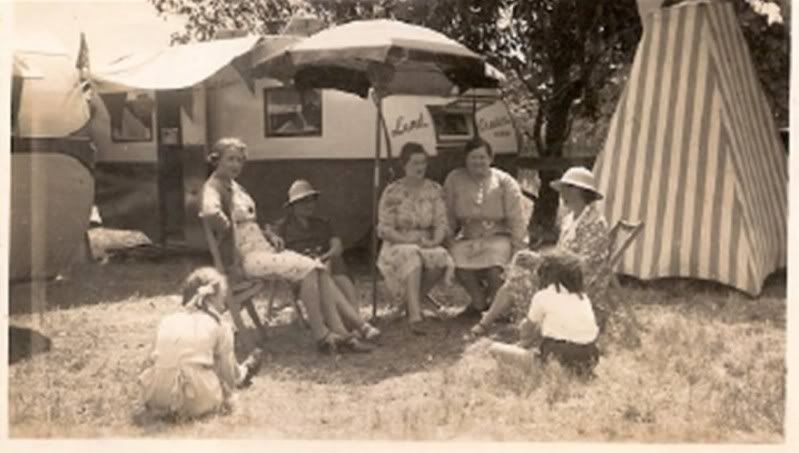 A scene at one of the rallies - note the pair of Land Cruiser 'Royals' in the foreground: 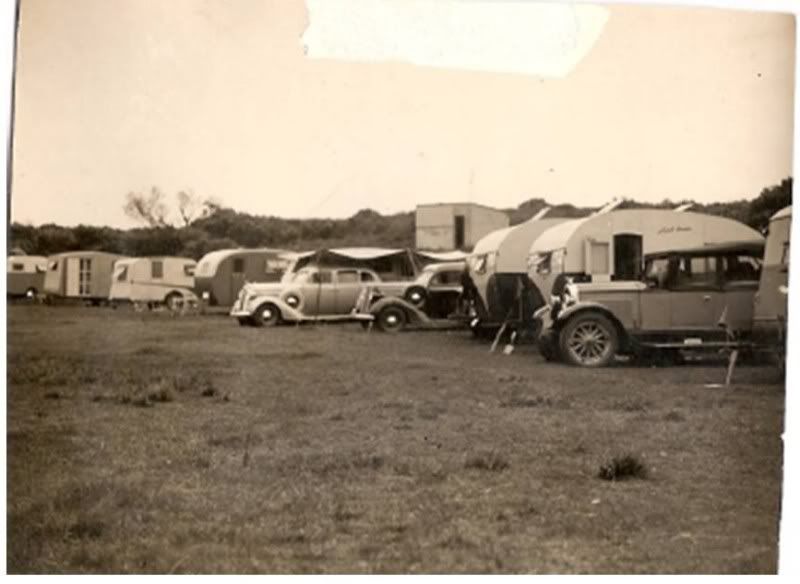 Another rally scene with a Don on the far side of the tent on the left, and what I think are a couple of Land Cruisers on the right: 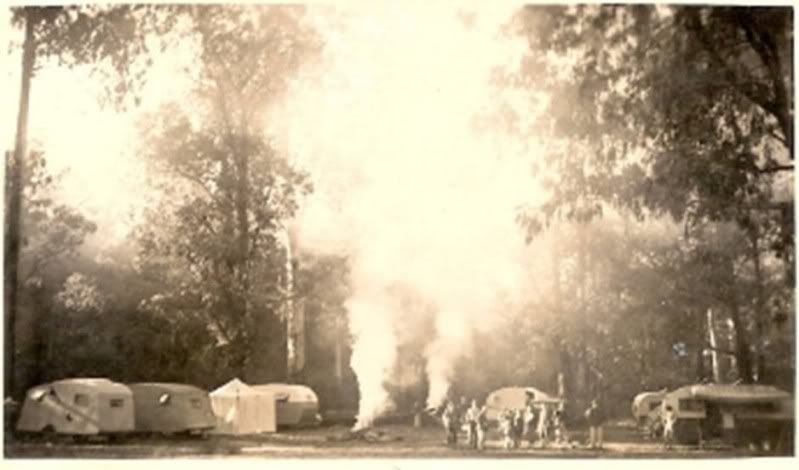 And finally a photo from the RACV magazine The Radiator in May 1938 showing the Easter rally held at San Remo.  Thanks Bobt for letting us see these photos. Just fascinating to look at. Don Ricardo
Postscript: A photo posted by Cobber here revealed that the Furness caravan shown in the above collection of photographs belonged to Mr Fred Vary, who was the first Australian member of the English Caravan Club. |
|
|
|
Post by cobber on May 26, 2010 15:26:53 GMT 10
This photo was offered for sale on ebay by a South Australian seller in January 2009. Kaybee has identified the car as a 1933 Ford Phaeton that has the “Australian Built Body”.... so there is a high probability the photo was taken in Australia. The seller thinks the photo might have been taken in 1936.... it sold for $45.50. 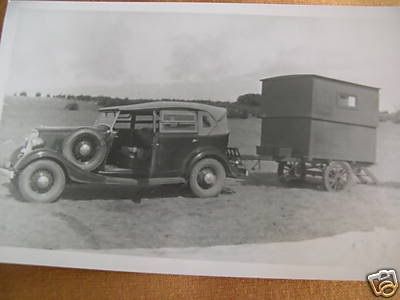 Cobber. |
|
|
|
Post by cobber on Jul 24, 2010 8:04:01 GMT 10
This article from the Launceston Times 28th April 2009 shows a 1930s caravan now in the possession of the Queen Victoria Museum and Art Gallery in Launceston. There is a thread on this caravan here in the memorabilia forum. 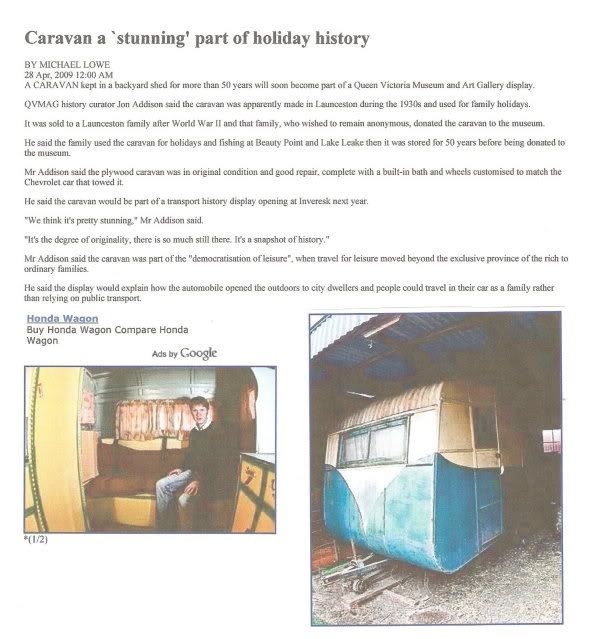 3/4 rear view... one rear tail light   Cobber.
Additional photos - September 2017Photo of caravan during restoration and preservation at the museum in Launceston: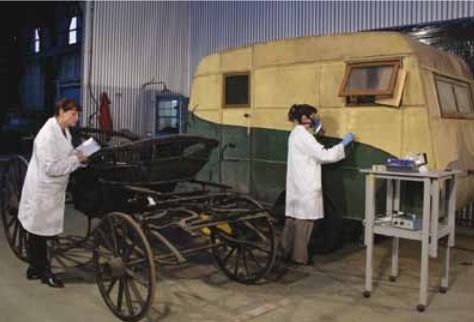 (Source: Queen Victoria Museum and Art Gallery, Annual Report 2009-10, Launceston, page 9) Photos of van following restoration...posted by Cobber on 8 October 2011 here...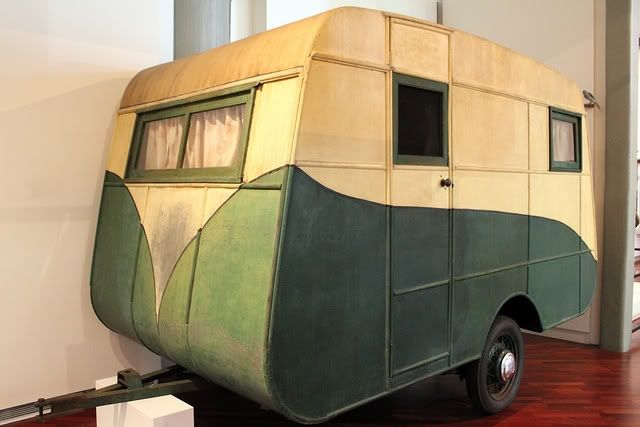 ...and Akeepsake on 29 April 2014 with his comments here: ...and Akeepsake on 29 April 2014 with his comments here:Was in the Queen Victoria Museum at Inveresk ( Launceston Tas) and spotted this! It was found by a mate of mine a while back and had been built by the husband for her newly we'd for their honeymoon The elderly lady (the original owner) said her husband fitted the bath so she could bathe while honeymooning It is as found original condition and is a cracker! Think it was built late 30s?? 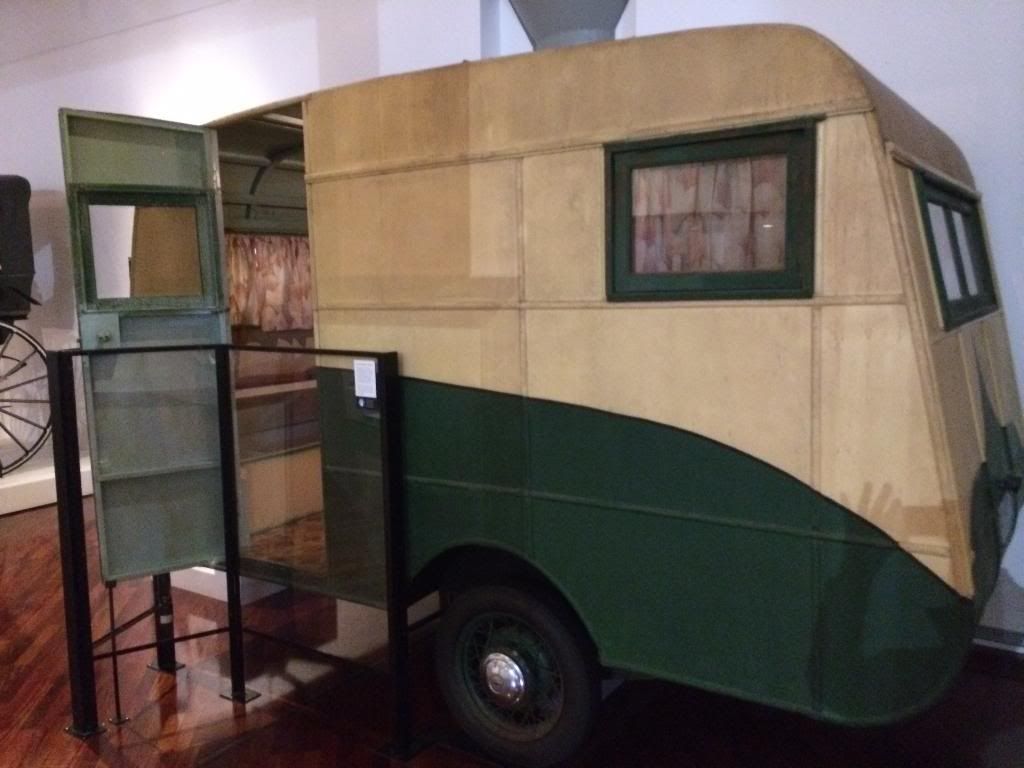 Interesting bath with sink which drains into bath my assumption is the boiling water gets poured in this small sink then drained into bath as required to control temperature?...  One for the Lino thread Cobber! 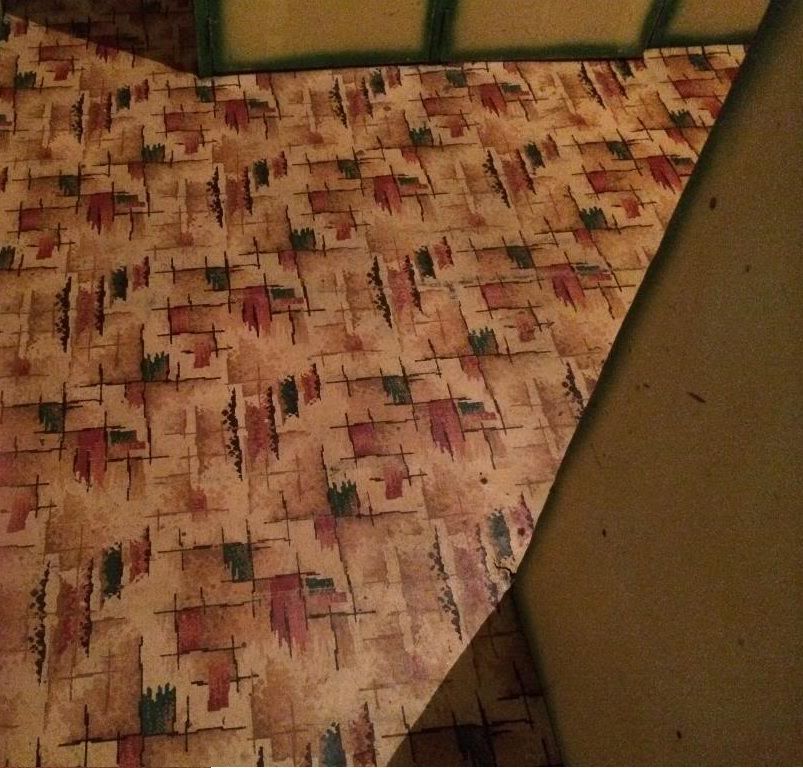 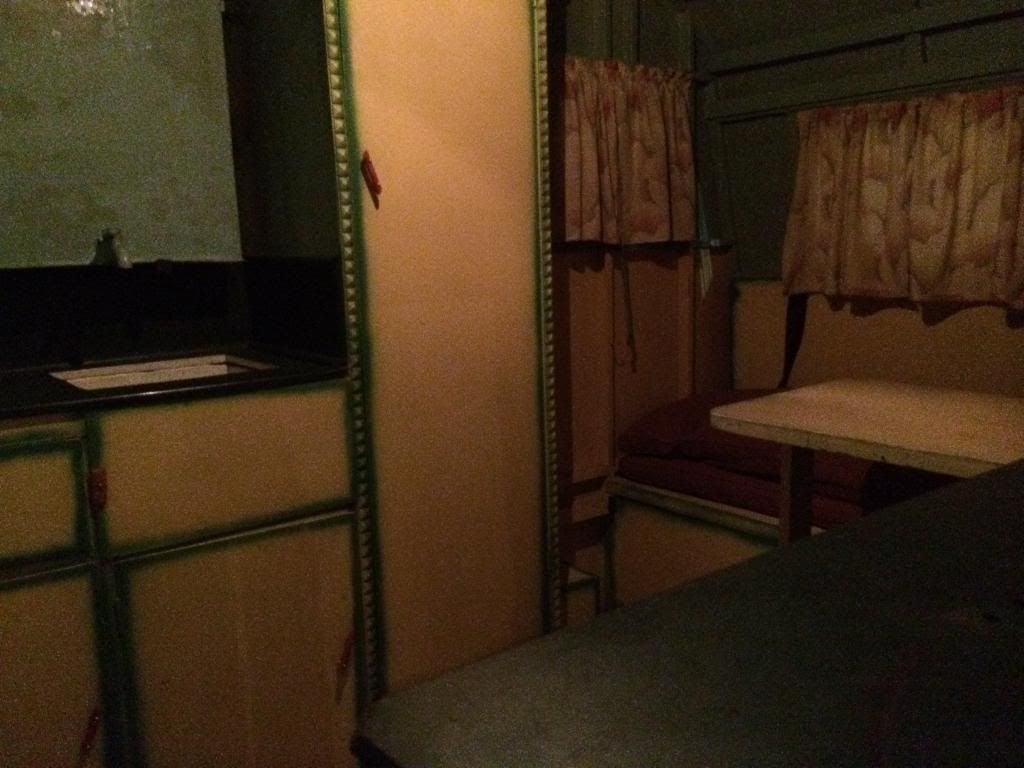 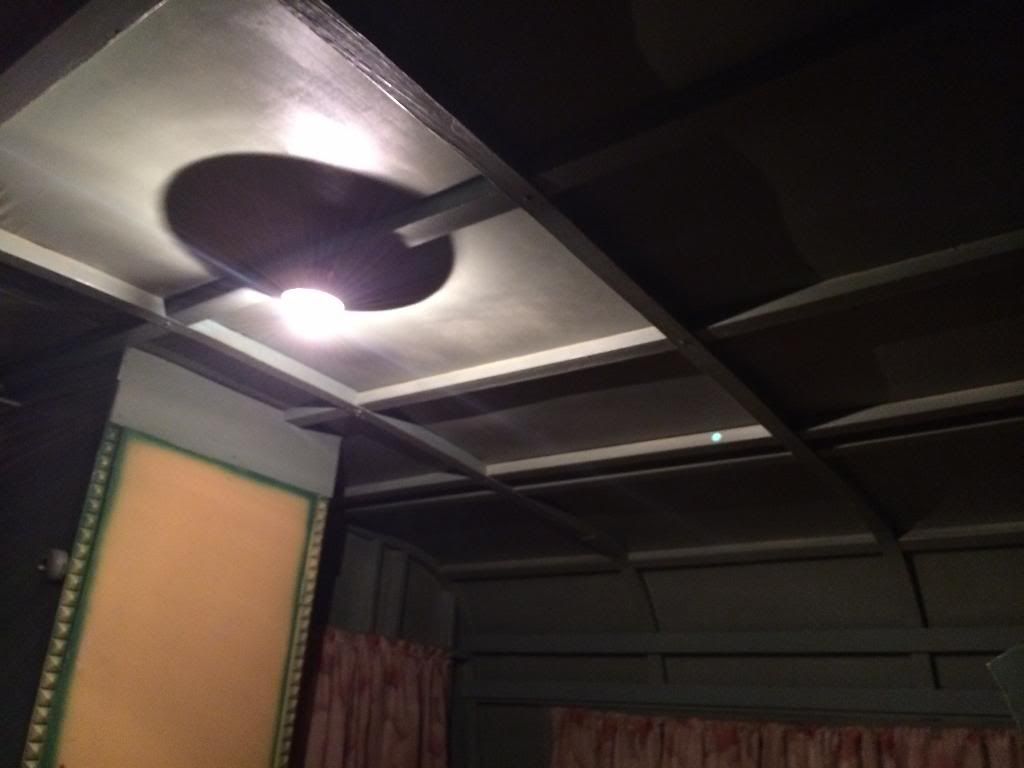 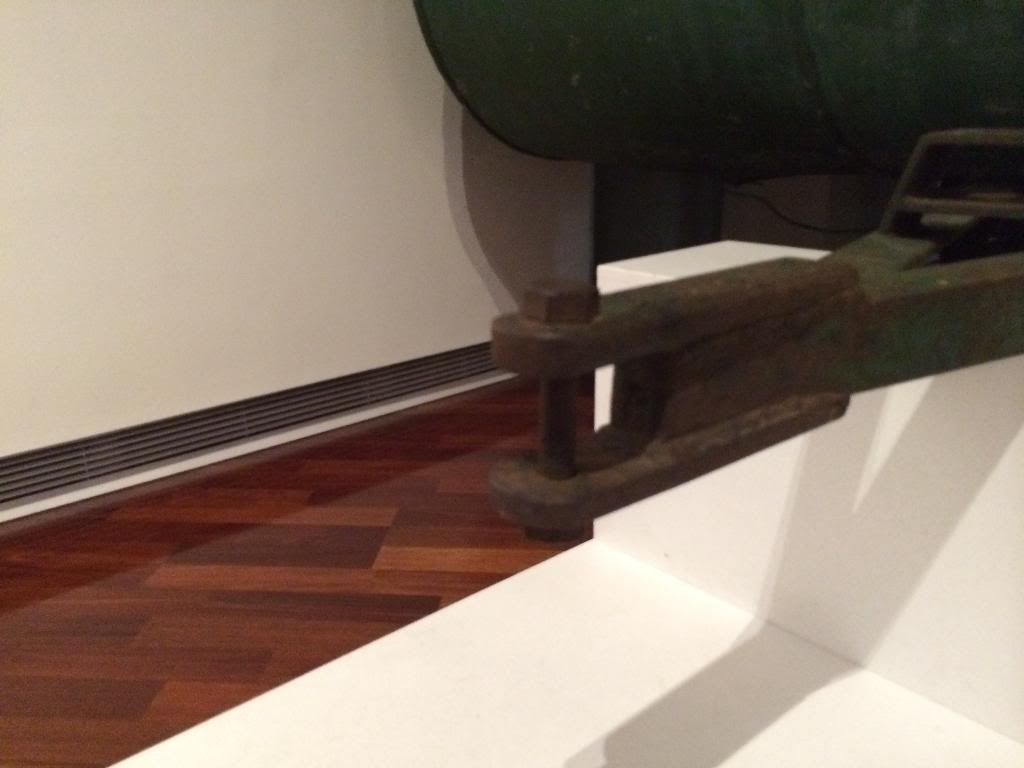  Don Ricardo |
|
|
|
Post by Don Ricardo on Nov 13, 2010 22:48:31 GMT 10
From time to time Cobber has commented on photos of caravans in the 1930's which have included an American Covered Wagon style caravan (Covered Wagon was the name of one of the early US caravan manufacturers). An example is the following photo taken at the 1937 RACV Caravan Club rally held at Barwon Heads (see Reply #32 above): 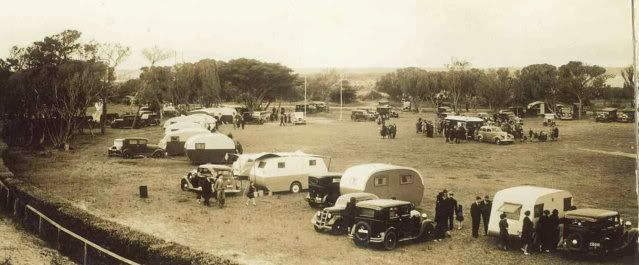 Cobber Cobber commented: "Going back to the RACV rally photos....... in the first photo the 'van in the center of the field with the crowd around it is possible a "Nomad Covered Wagon" which were imported into the UK from America in 1937..... and maybe brought into Australia to test the market." Another example is this photo of the Home Comfort caravan display at the 1938 SA Royal Show: 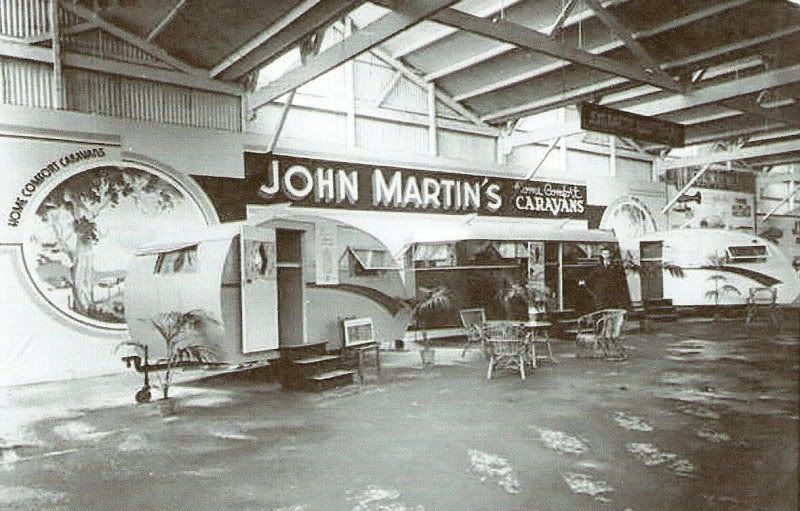 When posting this pic, Cobber's comment was: "The two plywood caravans look as though they could be locally built but the 'van in the centre looks to be the 1937 British version of the “Nomad” Covered Wagon (door on the off side) which were imported into the UK from the USA to be fitted out with "the finest British Cabinet craft".... and then exported to good old OZ... at least this could be one example of that occurring." A final example of this type of van from the 30's can be seen in this photo from another early RACV Caravan Club rally (second caravan from the left, and possibly the same van as shown in the first pic):  While Cobber's suggestion that these vans were imported from the UK is quite reasonable, it is also possible that these vans were built in Australia, possibly by a home builder. The 1946 edition of John D Porter's 'How to Build Trailers' includes plans for two caravans of this style. The first is "The Brisbane": 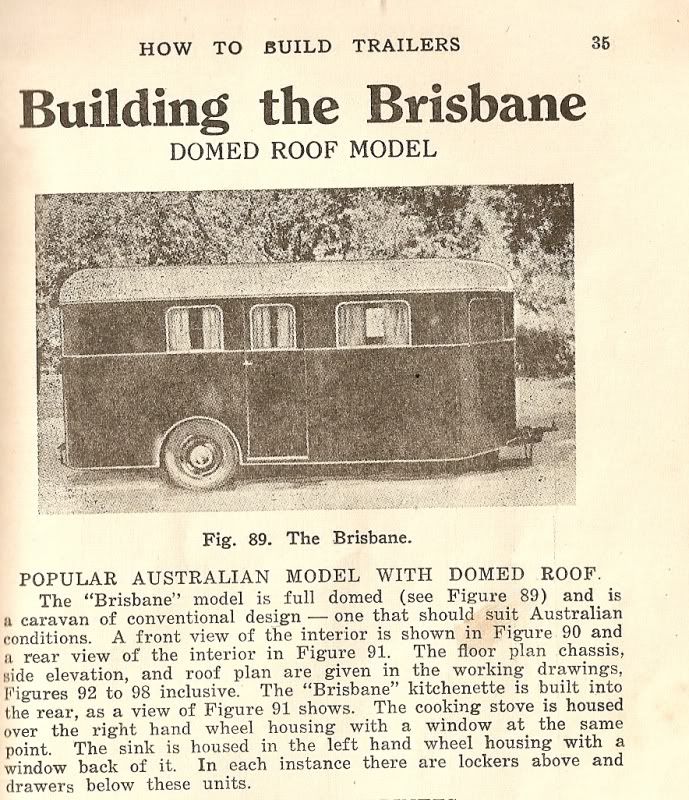 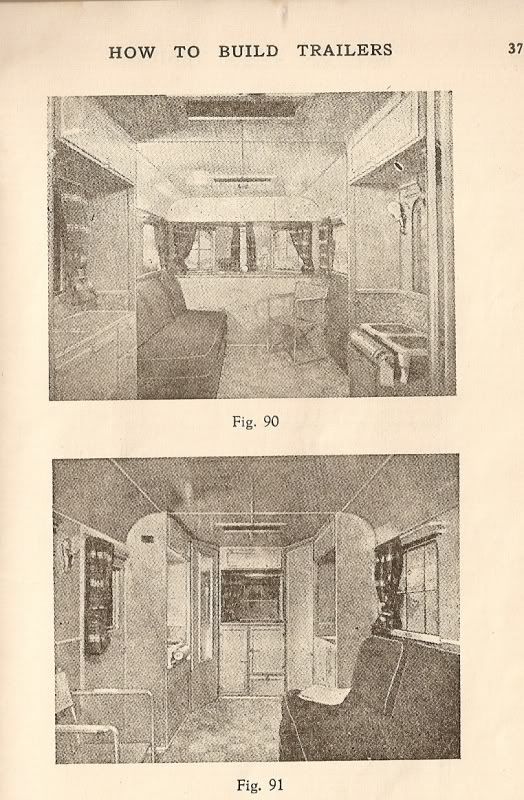 (Source: John D Porter, How to Build Trailers, sixth edition (1946), pp 35 & 37) The plans for this van included covering the exterior walls in leather, which was a very American and British styling feature. The second van was the "Cruisemite De Luxe Steel Trailer": 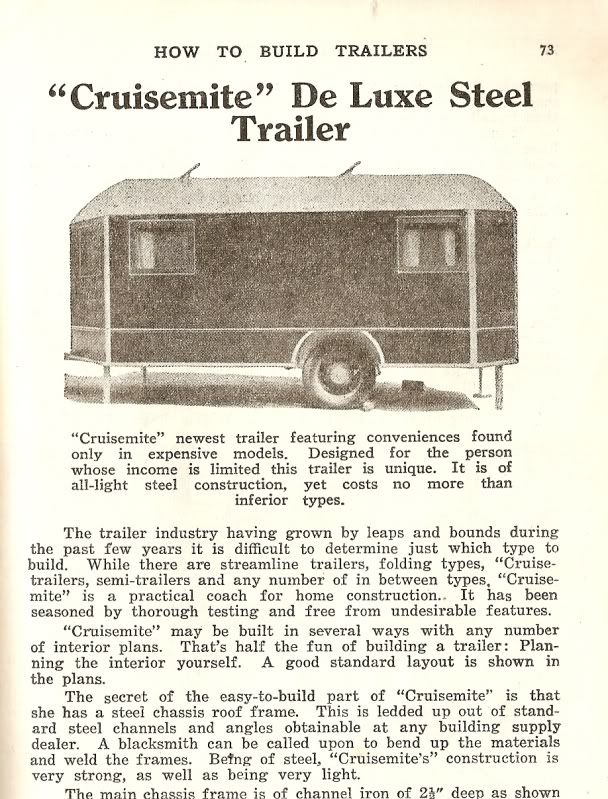 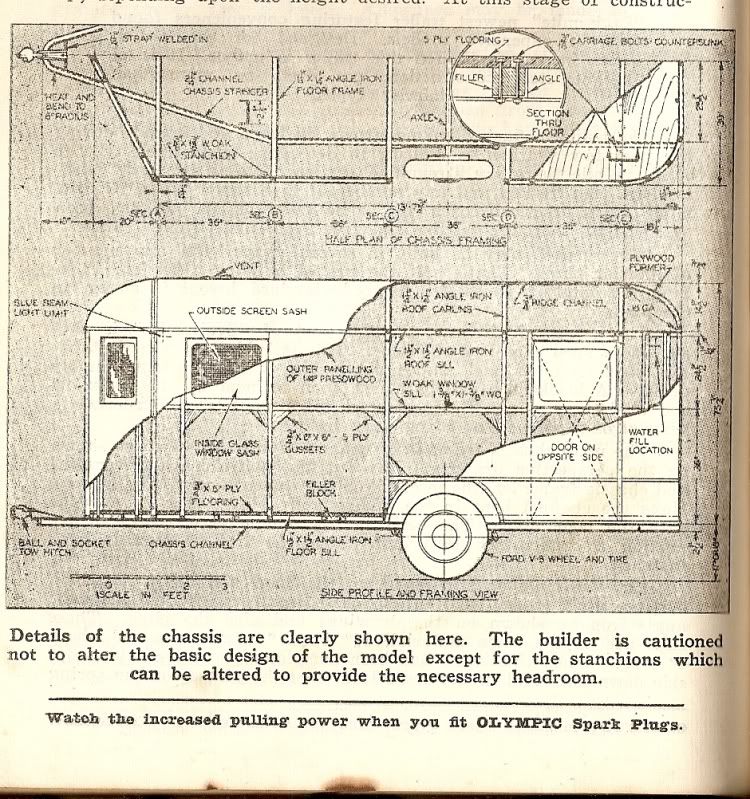 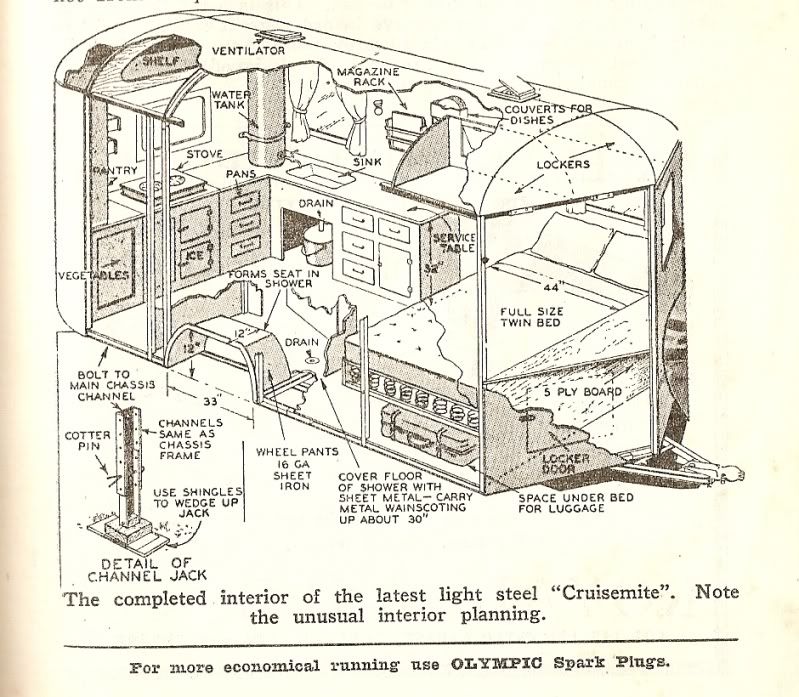 (Source: John D Porter, How to Build Trailers, sixth edition (1946), pp 73, ,74 & 77) In this case the steel in the name of the caravan refers to the frame. The van was clad in Rescote. Of course we have no knowledge of how many Australian home caravan builders used Porter's plans to build a van, but the same designs are in Porter's book of plans for 1950, except that...by 1950 "The Brisbane" had become "The Goulburn"... Go figure.    The other oddity about Porter's plans for "The Brisbane/Goulburn" and "The Cruisemite" are that the doors are located on the off side (driver's side), which perhaps tells you something about the origins of the plans. USA anybody? Don Ricardo
Editorial note - September 2017: We now know that a number of Australian caravan manufacturers built coach-style caravans in the 1930's, although unfortunately we are aware of only one surviving example. More information about Australian coach-style caravans can be found here. |
|
|
|
Post by cobber on Nov 14, 2010 9:44:37 GMT 10
G'day Don R. Mark Twain said …...“The man who does not read good books has no advantage over the man who cannot read them ” Cobber said....... “The more we read the more we know the more we have to learn”  In the 1938/39 “Australian Caravan Magazine & Log Manual ” there is the following very clear photo of what I think is the 'van shown in your third photo from the top, I don't think it is the same as the one I call the “Covered Wagon”.  Here is another photo from the same 1938/39 Manual showing what is more likely to be the “Covered Wagon” style. There is some writing along the side at the roof line.... I have tried to improve the image and zoom in on it but the photo is so grainy I can't read it........... HOW FRUSTRATING IS THAT !  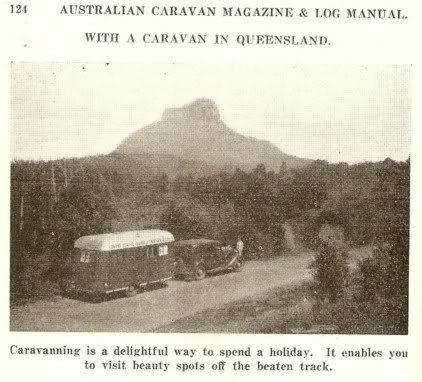 Mister Porter me thinks was in the habit of regurgitating material in his various editions... but changing captions just to confuse you and me  . You have the 1946 book “How to Build Trailers”... I have the 1948/49 book that he had decided to rename “ How To Build Caravans”....... much better  . The photos you show above for “Building The Brisbane” are the exact same photos and text my book shows for “Building The Pacific” & you say it later became the "Goldburn" ..... Like wise for the “Cruisemite” De Luxe Steel Trailer.... in my 48/49 edition it is called the “Goulburn” De Luxe Steel Trailer ( he must have forgotten they were now caravans).... so what was the "Cruisemite" called in 1950  I've scanned some photos from the 38/39 book and I'll starting posting them now. All good stuff ….... aye ? Cobber.
Editorial note - September 2017: These caravans have since been identified as a Landcruiser and an Indian Trailer Coach respectively. For more info click here. |
|
|
|
Post by cobber on Mar 13, 2011 12:57:16 GMT 10
Courtesy of “Trove”...a photo from February 1936... so the chances are the 'van could even be a 1935 model, or earlier. I think we've seen the profile on the forum before... can't find it but  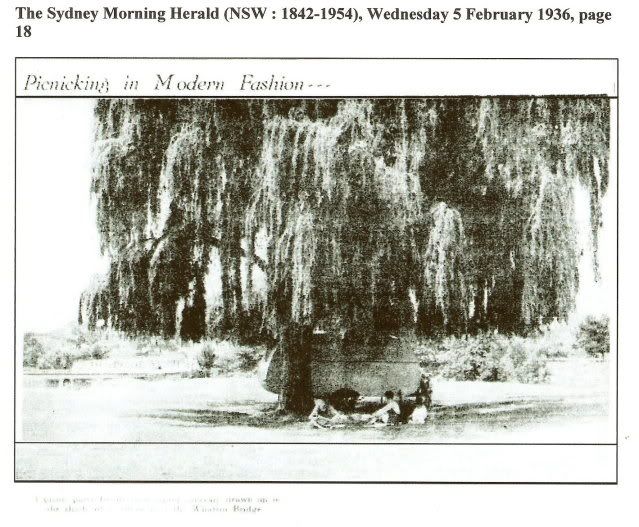 The caption reads:- A picnic party beside their motor caravan, drawn up in the shade of a willow tree near the Windsor Bridge.Cobber. |
|
|
|
Post by Don Ricardo on Mar 15, 2011 22:19:13 GMT 10
Hi all, Following is a photo of a "trailer caravan" printed in The West Australian newspaper on Saturday, 14 November 1931 (p 18). According to the caption it was built in Perth, and as such I think it probably ranks amongst some of the earliest Australian "trailer caravans" we have seen photographs of, albeit this one being of a distinctly English style: 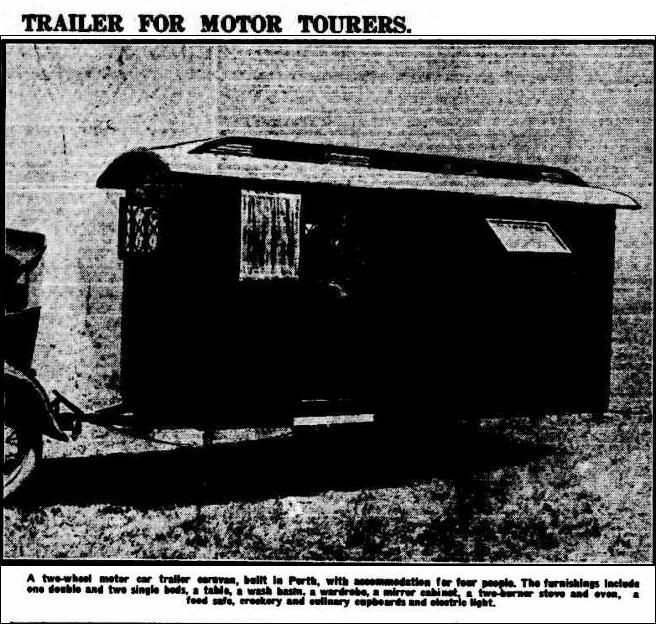 (Source: National Library of Australia nla.gov.au/nla.news-article32390200 ) Check out the equipment list - not too spartan at all. It's interesting to compare the design of this van with the ones which were being produced only 3 or 4 years later, let alone by the start of WWII. Just shows what incredible developments in caravan design occurred in the 30's. Don Ricardo
Editorial note: Later research identified this caravan as being one built by Tivoli Garage in Perth. Don Ricardo |
|
|
|
Post by cobber on Mar 30, 2011 13:03:38 GMT 10
This item appeared in the English magazine of December 1937 expands a little on the first Caravan Rally in Australia that was first mentioned at reply # 32 in this board. 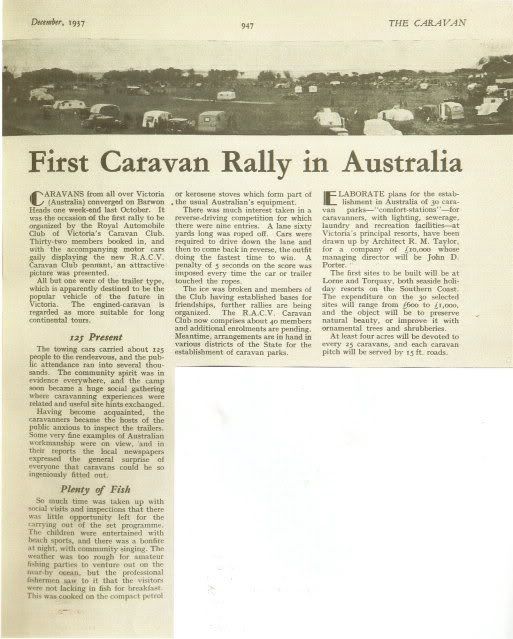 Cobber. |
|
|
|
Post by Surf Tragic on Mar 30, 2011 16:53:08 GMT 10
Yep Cobber, it's all good stuff.
The editorial about the first Caravan Rally & especially the commitment to future parks.
Plans drawn up by Architect R M Taylor for 30 caravan parks
4 acres for 25 vans and each caravan 'pitch' (is that where the van sits?) will be served by 15ft roads.
ST.
|
|